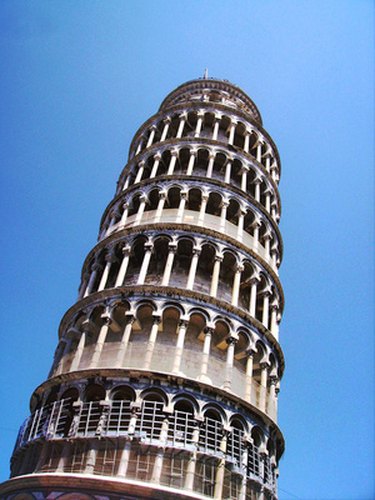
Foundation settlement is the shifting of the foundation (and the structure built upon it) into the soil. This can cause damage to the structure. Whether the soil is moist or dry is central to predicting the amount of settlement to expect in a given foundation. Areas with moist soils will have more foundation settlement than dry areas. The idea is that as water is squeezed out from the soil, the structure will shift according to the empty spaces the water left. The more water, the more shift.
Immediate Settlement
Video of the Day
Immediate settlement concerns the initial pressure on the soil under and surrounding the foundation. It is "immediate" because it occurs during and right after construction. It has nothing to do with water displacement, but is merely caused by the weight of the structure. In terms of building foundations, immediate settlement is relatively easy to predict and measure. In many cases, given the nature of the soil, foundations are constructed with the ability to withstand a certain amount of shift without damage. Damage usually occurs only in the long term, as the shift slowly continues over time.
Video of the Day
Consolidation
Consolidation settlement is distinguished from immediate settlement both by the duration of the settlement and by displacement of water. Consolidation is the more worrisome form of settlement because it is difficult to predict over months or years. Consolidation settlement is the settling of a foundation, over time, due to pressure exerted by the structure and squeezes out the water content of the soil, thus compressing it. Expulsion of moisture from the soil usually is a long-term process.
Primary and Secondary Consolidation
Consolidation settlement has two components, primary and secondary. The former deals explicitly with the settlement caused by soil moisture displacement, and the latter deals with the elastic settlement after all movable water has been squeezed out of the soil. Primary consolidation is the most significant and potentially harmful of the two. Primary consolidation takes quite a bit of time, from weeks to years. Secondary consolidation is the quicker result of primary consolidation. Once primary has been completed, and all movable water has been moved, secondary kicks in. Secondary consolidation occurs immediately after primary, and takes far less time to complete. After secondary consolidation is complete, the structure remains in its permanent position. As a result, many builders advise residents in new homes to avoid repairing any settlement damage until secondary consolidation is complete, which is normally after two years at most.